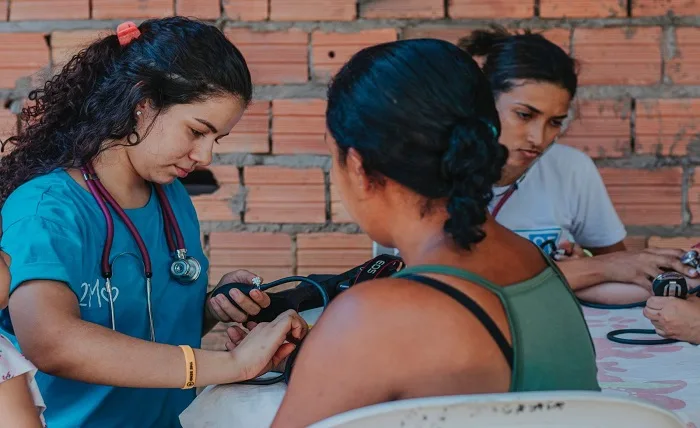Nurse credentialing is a cornerstone in ensuring patient safety and delivering quality care, especially in esteemed healthcare systems like the USA. The USA remains a top destination as employment opportunities in foreign lands entice more nurses globally.
However, navigating the labyrinth of credential evaluations can be daunting. The difficulties of working as a nurse in the USA often extend beyond clinical expertise, with the credentialing process itself presenting a unique set of challenges.
Understanding the Credential Evaluation Process
What is Credential Evaluation?
Credential evaluation is a systematic review of a nurse’s educational and professional qualifications obtained outside the USA. It determines their equivalence to local standards.
Steps to Navigate the Process:
- Approach a Recognized Service: Select a trustworthy nursing credentials evaluation service.
- Document Submission: Provide all necessary records, including academic transcripts and professional certifications.
- Await the Report: Receive a comprehensive breakdown highlighting the compatibility of your foreign qualifications with local benchmarks.
Why is this Evaluation Crucial?
It ensures that nurses from diverse educational backgrounds align with local nursing standards, promoting patient safety and high-quality care. Using a nursing credentials evaluation service facilitates smoother transitions and upholds the caliber of healthcare practices.
Common Challenges in the Evaluation Process
Navigating the intricacies of credential evaluation can spotlight some of the core difficulties of working as a nurse in the USA.
- Documentation Issues:
A frequent hurdle is missing or incomplete paperwork. Proper documentation is foundational for any evaluation process, and its absence can considerably impede progress. - Language Barriers:
Translating non-English certificates and transcripts for foreign nurses is a challenging task. When translated, the nuances of medical terminologies can sometimes skew the original meaning, leading to possible misunderstandings. To overcome this challenge, it is advisable to hire a certified translation services provider. These professionals are well-equipped to handle the complexities of medical jargon, ensuring that the original meaning is accurately conveyed and reducing the risk of miscommunication. - Diverse Educational Standards:
The world of nursing education isn’t uniform. Varied educational standards across countries can lead to confusion, as what’s considered standard in one country might be viewed differently in the USA. - Operational Delays:
Waiting is often a byproduct of the evaluation process. Delays can emerge due to extensive verification processes or occasional miscommunication between agencies, institutions, and individuals. - Specialty Qualification Recognition:
The US healthcare system has specific specialties and qualifications. Foreign nurses might face difficulties recognizing or equating their specialized qualifications appropriately.
Understanding these challenges underscores the complexities and difficulties of working as a nurse in the USA, especially during the initial transition phase.
Overcoming These Challenges
Addressing the difficulties of working as a nurse in the USA necessitates foresight, preparation, and a proactive mindset.
Preparation & Research
Exploring new cities while travel nursing can be an exciting and rewarding experience, but it is important to understand the unique prerequisites of the USA before embarking on the journey. One must acquaint oneself with the country’s specific requirements, which can be significantly aided by seeking guidance from local nursing boards or associations.
These authoritative bodies offer invaluable insights and can clarify ambiguities. Additionally, networking plays a crucial role. Engaging with foreign nurses who have already navigated this path can provide firsthand experiences and practical advice.
By preparing adequately and harnessing the collective wisdom of peers and institutions, many challenges can be anticipated and addressed effectively.
Dealing with Documentation
One of the prominent difficulties of working as a nurse in the USA lies in handling and presenting accurate documentation. To mitigate these challenges:
- Organized Records: Maintaining a meticulous, well-organized file of all records streamlines the evaluation process, ensuring every necessary detail is at hand.
- Certified Translations: Given the language discrepancies, investing in certified translations for all non-English documents is prudent. This ensures clarity and minimizes potential misunderstandings.
- Backup Copies: The bureaucratic process might be unpredictable. It’s always wise to have backup copies of all essential documents. This safeguards against unexpected losses and expedites any repetitive submissions or verifications.
Adopting a Proactive Approach
Addressing the difficulties of working as a nurse in the USA demands more than reactive measures.
- Preparatory Courses & Training: Proactively enrolling in preparatory courses or securing additional training bridges the educational and practice gaps, ensuring alignment with US standards.
- Mentorship Programs: Engaging with mentorship initiatives provides invaluable guidance, allowing for smoother transitions and acclimatization.
- Consistent Follow-up: Throughout the evaluation process, regular follow-ups demonstrate commitment and can expedite any pending matters, mitigating potential delays.
The Role of Technology in Simplifying Credential Evaluations
While acknowledging the difficulties of working as a nurse in the USA, it’s vital to recognize technology’s transformative role in easing these challenges.
- Digital Platforms: Modern platforms simplify document submission and tracking, offering real-time updates and seamless communication throughout the evaluation journey.
- AI & Machine Learning: Incorporating AI and machine learning expedites credential verification, significantly reducing wait times and enhancing accuracy.
- Online Databases: Comprehensive databases cataloging global nursing standards enable straightforward comparisons, ensuring foreign credentials are juxtaposed accurately with US benchmarks. This digital evolution is progressively diminishing traditional barriers.
In Conclusion
The journey to navigate the difficulties of working as a nurse in the USA, especially in credentialing, is undeniably intricate. However, meticulous credential evaluation remains pivotal in upholding global nursing excellence.
As foreign nurses venture into this realm, diligence, organization, and a proactive stance are invaluable allies. Encouragingly, the landscape is in flux, with technology casting a transformative light on these challenges.
Embracing these advancements eases the path and amplifies the quality of care across borders.



